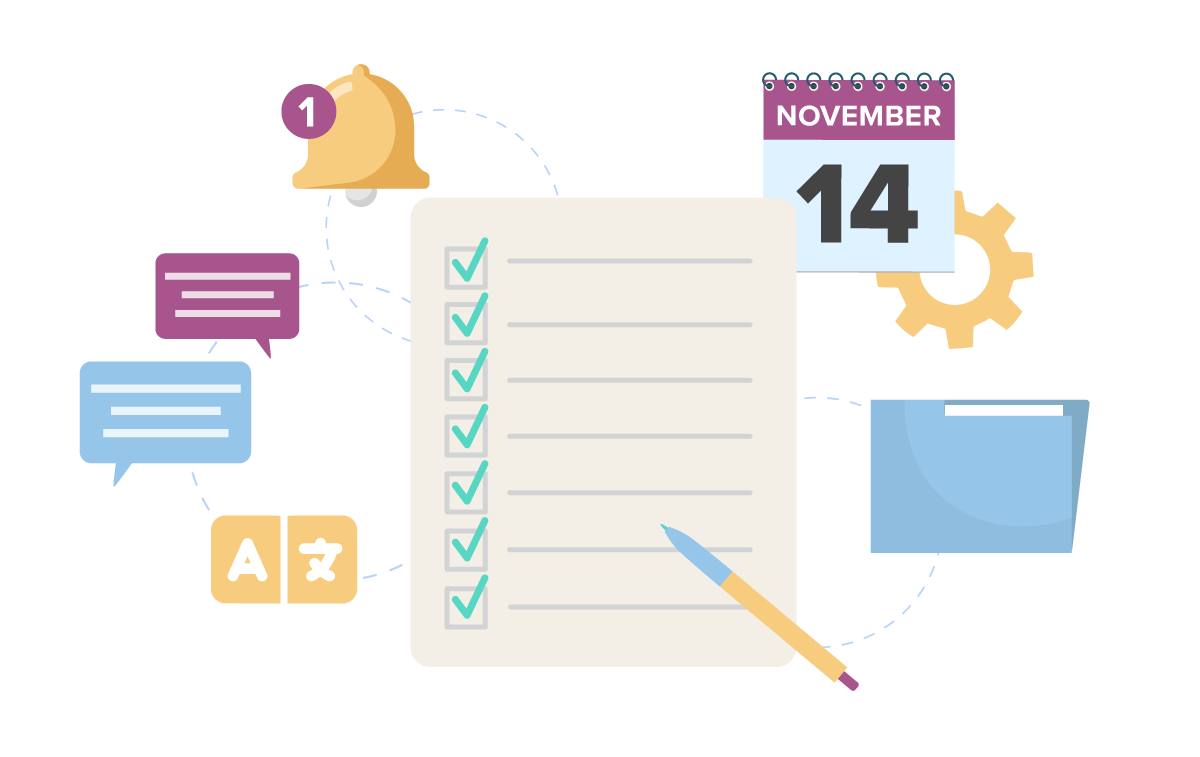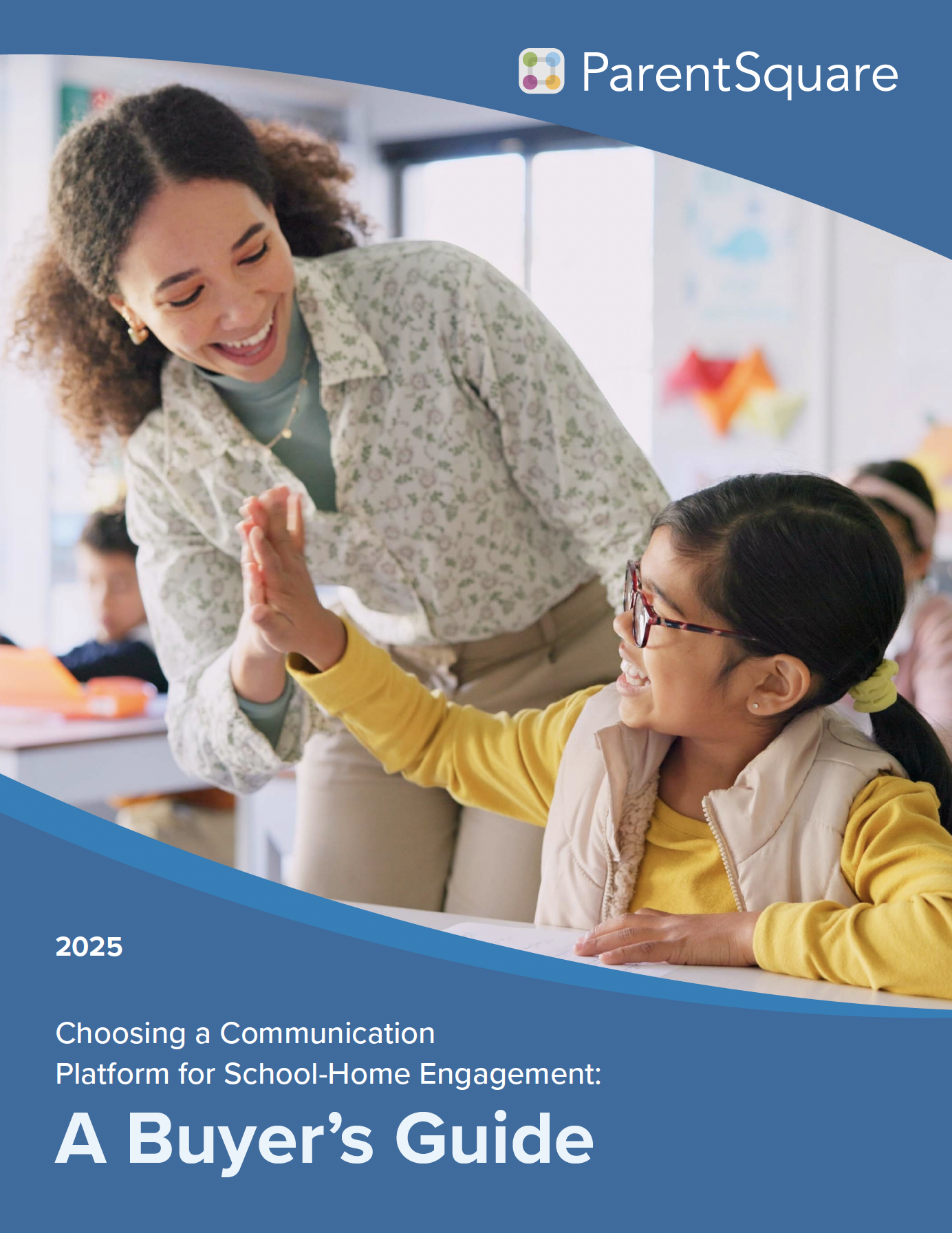
A unified, school-home communications solution can provide many benefits to districts and their stakeholders. With a comprehensive system, districts can minimize administrative burdens, save time for students, parents, and teachers, and cut costs by replacing multiple, disparate platforms with a single solution.
Research has consistently shown that the active involvement of families in a child’s education is the number one predictor of their academic achievement and long-term success. Implementing a feature-rich school communication solution can be key to engaging families, increasing their involvement in their child’s education, and ultimately lead to positive student outcomes.
In order to select the best platform for your district, many school districts choose to create a thoughtful and comprehensive request for proposal (RFP). An RFP for any communications solution, alert system, or website hosting and content management system (CMS) should include a wide scope of considerations, with a strong focus on engaging families and streamlining administrative processes.
At minimum, a school communication solution should have the following:
- Extensive, documented experience in providing communications services to school districts
- A proven track record of successful implementation in your state
- A strong customer renewal rate, including customer testimonials
Additionally, it’s important to think about how a communication solution needs to function in your district. To make sure you’re covering all of your bases, start by defining the specific scope of services that your community requires.
Here are seven questions to consider as you develop a comprehensive RFP for a school communication solution.
1. Does the solution offer unified communication services that connect all stakeholders?
Your solution should provide an engagement platform that unifies school-home communications, including voice, text, app, email, website, and social media.
In addition to reducing the number of siloed communication solutions the district must manage and support, this also reduces the number of systems a parent needs to access. All stakeholder groups should be able to access and effectively use the platform, from the district level to the classroom.

2. How is the solution designed to effectively engage families?
When preparing an RFP for a communication solution, it’s important to think about the specific ways the platform should engage families. Nearly all platforms will offer two-way communication between a parent or guardian and school or district staff.
However, it’s also important to consider what convenience features the platform can provide to parents and guardians, such as multi-language two-way communication and automatic connection to their child’s class. Families should also be able to easily manage how and when they receive messaging.
3. What communication and administrative processes should the solution streamline?
Beyond basic notifications and messages, a communication platform should improve your school’s communication and administrative processes. When preparing an RFP, here are some key features that can help streamline these processes:
- Secure online delivery of report cards, progress reports, IEPs, and other sensitive documents
- Electronic forms and permission slips
- Parent-teacher conference scheduling
- Volunteer signups and event RSVPs
- Online donations
- Polls and surveys

4. Can the solution send mass alerts and notifications efficiently?
Whether you’re sending out emergency alerts about inclement weather or updates about bus delays, the communication platform you choose should have a proven track record of successfully delivering mass alerts to districts of all sizes.
Flexibility is key: Senders should be able to create custom notification groups, for example, and deliver urgent and mass alerts via multiple channels.
5. How does the solution integrate with current school systems?
Any communication platform you choose should integrate seamlessly with your SIS. At a minimum, look for a daily sync of essential data from the SIS to the communication platform. Single sign-on (SSO) is another benefit that improves accessibility to systems for school and district staff and families.
6. Is the solution accessible to families in their preferred language?
To ensure equitable communication, translation needs to be instant and two-way so users can access messages and notifications in their preferred language. Translation options should also extend to websites in the district, so families have equitable access to all school information.

7. Does the solution provide a rich website hosting and content management system?
An attractive, integrated, and ADA-compliant website is key to engaging your school community and maintaining a consistent school brand.
A unified communication platform that includes rich website hosting and a CMS allows for seamless editing, navigation, and posting between the platform and your school’s website. Drag-and-drop page layouts and realistic and responsive editing can also help ensure a high-quality implementation.
Create an RFP that meets your district’s needs
If you’re getting ready to prepare an RFP for a school communication solution, these seven questions will help you get started. However, we know that there are an array of other considerations that you may want to include in your decision.
If you’d like to learn more about how ParentSquare might fit your district’s needs for a school communication solution, reach out to our team—we’re always happy to connect!
Looking for more RFP resources? ParentSquare’s Proposal Specifications and Scope of Services resource includes language and examples that you can adapt and use for your district’s own RFP.







